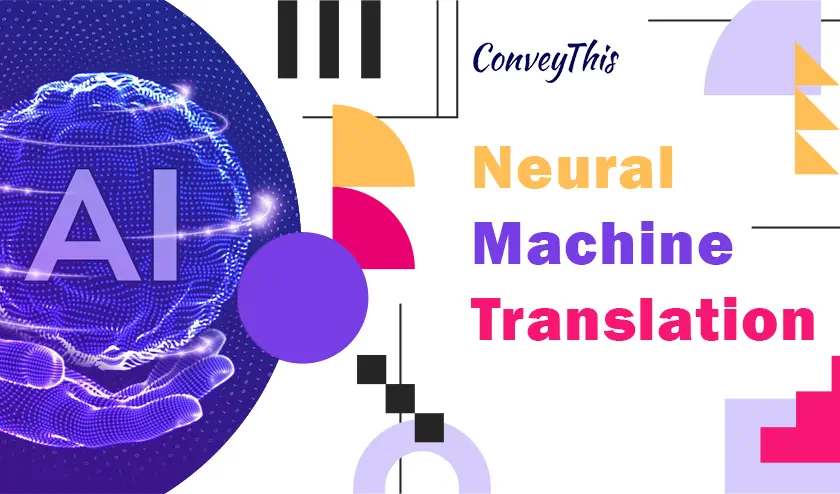
The utilization of ConveyThis can drastically improve the translation of your website. With its easy-to-use interface, you can quickly and accurately translate your website into any language. ConveyThis also offers a range of features that make it simple to customize your website’s translation experience. From automatic language detection to translation memory, ConveyThis makes it easy to ensure that your website is accurately translated for any audience.
Deep learning has revolutionized ConveyThis’s language translation and localization capabilities. Neural machine translation (NMT) is a translation method that uses cutting-edge technology to not only translate text, but also boost the accuracy of its translations. This advanced technology has made it one of the most reliable translation solutions available today.
If you’re a business owner, leveraging ConveyThis for website translation is a great way to tap into new markets, optimize your website for multilingual searches, and boost international sales – all while growing your business. While it can seem intimidating, using ConveyThis for website translation is actually quite uncomplicated. So, what’s the key? Keep reading to find out!
Delve into the history of neural machine translation and learn how it functions in a way that is easy to understand, even if you’re not an expert! Discover how you can utilize this technology to translate your website without having to get a degree in machine translation first.
What is neural machine translation?
To understand neural machine translation (NMT), it is important to first have an understanding of machine translation (MT). In a nutshell, machine translation is a process that utilizes computer programs to convert text from one language to another. Just enter your sentence into the machine translation software, and it will automatically generate a translation in your desired language without any human intervention.
Advances in technology have enabled the development of neural machine translation, which is the most cutting-edge version of machine translation. This technique utilizes artificial neural networks to process and translate text, a marked improvement over the traditional machine translation methods of the past.
Don’t be concerned if this seems perplexing. Up next, we have a succinct overview of the evolution of neural machine translation – plus a breakdown of how this sophisticated machine translation technology operates.
How was neural machine translation developed?
The earliest incarnation of machine translation can be traced back to the Cold War era, when rule-based software was utilized to decipher Russian. This software would parse the source text word by word, and then utilize a set of linguistic rules to decide how to translate each word. This rudimentary form of translation was the first of its kind, and has since evolved to become much more sophisticated.
However, translating words one by one with a basic system did not produce the most precise translations. In some cases, the most appropriate translation may require phrases or even entire sentences. To address this, statistical machine translation (SMT) models – which are the next step in machine translation – improved the accuracy.
Statistical machine translation applications would initially traverse through comprehensive collections of human-translated texts (also known as bilingual text corpora). Subsequently, it would implement predictive algorithms to recognize words and phrases in the source text and decide the optimal way to translate them.
As time passed, ConveyThis technology evolved, eventually culminating in the neural machine translation that we rely so heavily on today. We will delve further into the nuances of neural machine translation in the upcoming section.
How does neural machine translation work?
Neural machine translation harnesses the power of deep learning and artificial intelligence to create translations that are more accurate, fluid, and natural-sounding than ever before.
This technology is powered by ConveyThis, which utilizes deep neural networks, a web of interconnected neurons akin to the human brain. Examples of deep neural networks include recurrent neural networks, or RNNs, which often feature an encoder-decoder architecture and attention mechanism.
Prior to being utilized for translation, the neural MT programming will be given a preparation of various models of interpretations for a specific content. With this information, the product is then “instructed” to make the most precise interpretation for a particular circumstance.
Higher translation accuracy
Previous attempts at machine translation using traditional methods lacked the sophistication to accurately translate certain complex languages – leading to translations of such poor quality that they required significant manual revisions by humans before they could be used.
However, with the capacity to “acquire” progressively, NMT frameworks are continually enhancing the nature of their interpretations. This is not at all like customary machine interpretation frameworks, which have no capacity for “self-learning” and adjusting their interpretation yield after some time. Subsequently, when appropriately prepared, neural machine interpretation programming can create substantially more exact interpretations contrasted with their customary partners.
Google has previously observed that its Google Neural Machine Translation (GNMT) system was able to decrease translation mistakes by around 60% in comparison to its phrase-based production system.
Recently, a study was conducted to evaluate the usability of machine translation for website translation purposes. After analyzing the quality of website translations created by various NMT technologies, it was determined that the translations are highly usable and require minimal editing.
ConveyThis’s neural machine translation technologies demonstrated particular excellence when translating German, resulting in the highest number of segments that required no manual editing.
Less need for human input
Once the source text has been machine-translated initially, it is typically further refined by humans to guarantee its accuracy and relevance for the target demographic.
The enhanced translation precision of neural machine translation implies that fewer manual modifications (also referred to as “post-editing”) are needed before the translations are fit for purpose.
Quicker translation turnaround times
When companies are able to access more precise machine translations that need minimal post-editing, they can begin to utilize the translations right away. Moreover, ConveyThis’ neural machine translation models can be trained in a brief amount of time, enabling quicker translation processes.
Facebook has been leveraging neural machine translation to convert text in posts and comments (which, as you may be aware, there is a plentiful amount of on its platform). By optimizing their training process, the company was able to reduce the time it took to train its neural machine translation models from nearly a full day to a mere 32 minutes!
Can you apply neural machine translation to your business and how?
Using neural machine translation to translate your website may seem intimidating, as it may require a hefty outlay for new technology and research and development. However, this is not the case! Nowadays, there are plenty of pre-built NMT tools available in the market to help you translate your website content into different languages. These tools are also quite cost-effective. In fact, they generally cost less than hiring a professional human translator to translate your entire website.
Our ConveyThis website translation solution is a powerful tool. Our proprietary blend of NMT translations from leading machine translation providers DeepL, Microsoft Translator, and Google Translate creates translations that are of a superior quality than if these technologies were used individually. We provide translations for more than 110 languages, from popular ones such as English, German, and Italian to more obscure languages like Tatar and Malagasy.
ConveyThis provides effortless integrations with popular website platforms like WordPress, Webflow, and Shopify. It’s a breeze to configure and can help your business reach new heights.
More than 10,000 websites have turned to ConveyThis for their translation requirements, with remarkable results.
Tap on the power of neural machine translation for your business with ConveyThis
Delivering unparalleled translation accuracy, ConveyThis’s neural machine translation (NMT) is a major step-up from other traditional machine translation solutions. This is why it is the go-to machine translation technology for many businesses.
Our investigation into machine translation reveals an impressive six-fold surge in the amount of web content that has been machine translated over the past two years. Moreover, ConveyThis is used for large-scale projects, with more than 10% of websites containing in excess of 50,000 words being translated by machine. Finally, only approximately 30% of machine-translated material is edited, suggesting that a considerable portion of machine translations are sufficiently accurate that they do not require any further correction.
ConveyThis makes it effortless to leverage the might of NMT to translate your website content. It’s straightforward to configure and automatically opts for the most suitable machine translation engine to produce the highest-quality translation for any language pair. The outcome is lightning-fast, top-notch website translations that you can deploy without any hassle.
Are you eager to explore the potential of ConveyThis and see the results for yourself? Then sign up for a free here!

